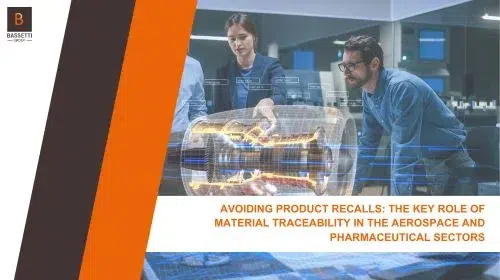At a time when a single product recall can cost millions of dollars in losses and ruin a reputation, mastering material data is no longer an option. Rigorous traceability, driven by dedicated tools, can become a life insurance policy for the aerospace and pharmaceutical industries.

In cutting-edge industries like the aerospace and pharmaceutical sectors, trust is an absolute requirement. Meeting regulatory constraints in a challenging economic environment is a constant challenge (Lambert, 2013).
The threat of product recalls looms constantly, capable of tarnishing a reputation and generating astronomical costs. Very often, the root cause of these incidents is not found in the finished product, but far upstream: in a failure of material traceability.
Poor management of material risks, whether it’s a non-compliant alloy or a poorly documented active ingredient, has severe consequences. Faced with this complexity, digitalization becomes a necessity. This is where an expert solution like TEEXMA for Materials comes in, transforming this constraint into a powerful lever for control, safety, and competitiveness.
The major challenge lies in the fragmentation of information. Prime contractors in the aerospace sector, for example, have ever-increasing demands for traceability and quality (Clivillé et al., 2019). Yet, critical data—technical datasheets, test results, certificates of conformity—are still (too?) often scattered across a multitude of silos. This dispersion makes material risk management extremely complex. How can you ensure compliance when data is incomplete? It’s an open door for error. In the pharmaceutical sector, a minor unrecorded/unreported change can alter a drug. In aerospace, an outdated technical datasheet can compromise a structural part. Each silo is a direct threat to material safety.
Faced with these pervasive risks, how can you regain control? The answer lies in digitalization and centralization.
Mastering materials is at the heart of certification processes. Flawed management of critical materials is a direct obstacle to ISO compliance. For critical embedded software, certification according to standards like DO-178C is a costly but indispensable constraint to guarantee an acceptable level of risk (Louis & Baron, n.d.).
Without a centralized system capable of providing proof of compliance instantly, the company engages in a constant battle against disorganization to satisfy audits.
Environmental regulations, particularly REACH, have introduced a new dimension of risk: the obsolescence of material data. When a chemical substance is banned or reclassified, a manufacturer must be able to quickly and certainly identify all products that contain it (Lemagnen, 2011).
Using an obsolete material specification is no longer just a performance risk; it’s a risk of legal non-compliance. This situation has a direct operational consequence: without active management of the information lifecycle, the company exposes itself to product recalls and costly failures over several years, not to mention the degraded brand image (consumer confidence index) which will take several years to recover to its pre-crisis level.
Faced with data disarray, the TEEXMA for Materials strategy is based on two pillars: data reliability and centralization. The platform imposes order by creating a single repository where all data is consolidated.
Reliability, ensured by validation workflows, guarantees the integrity of each piece of data. This duo is the foundation of true material safety, eliminating the risks of errors or re-entry, and making TEEXMA the guardian of your data capital.
Traceability is defined as the ability to retrieve the history, application, or location of an item by means of recorded identifications (Lambert, 2013).
TEEXMA for Materials implements this end-to-end traceability, creating a complete genealogy for each component. From the reception of the raw material batch to its integration into the finished product, every step is documented. This visibility is essential for managing critical materials.
In the event of an alert on a batch, it is possible to identify all impacted products in a few clicks, transforming reactive management into proactive control.
With TEEXMA for Materials compliance becomes a controlled process. The software allows for real-time monitoring of regulatory compliance, automating regulatory watch to anticipate the management of material risks.
By acting as an essential interface between the ERP (planning) and the workshop (Clivillé et al., 2019), the platform integrates advanced technical concepts to reinforce this control: digital error-proofing (Poka-Yoke), SPC (Statistical Process Control) monitoring, and IIoT connectors. TEEXMA becomes a true co-pilot for your quality.
Adopting a solution like TEEXMA for Materials transforms your approach to risk into a powerful performance lever, with a rapid and measurable return on investment (ROI):
Ready to turn your risk management into a competitive advantage? Discover how TEEXMA for Materials can secure your value chain during a personalized demonstration.
Clivillé, V., Berrah, L., Foulloy, L., & Chapel, C. (2019). Implementation of an MES: The testimony of an aeronautical supplier. 13th CIGI-Qualita’2019 conference.
Lambert, R. (2013). The importance of the quality approach in the implementation and execution of a pharmaceutical project. Doctoral thesis in Pharmaceutical Sciences.
Lemagnen, M. (2011). Integration of chemical risk in the design of industrial products. Application to the aeronautical sector. Doctoral thesis in Industrial Engineering.
Louis, V., & Baron, C. (n.d.). Towards continuous certification of critical software in aeronautics. DGA Techniques aéronautiques & INSA LAAS-CNRS.